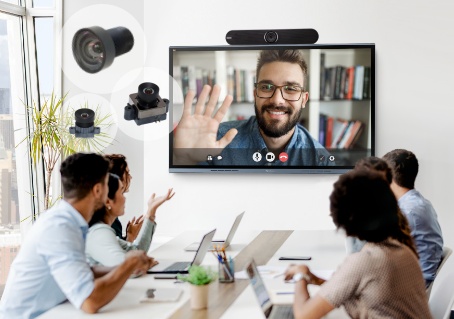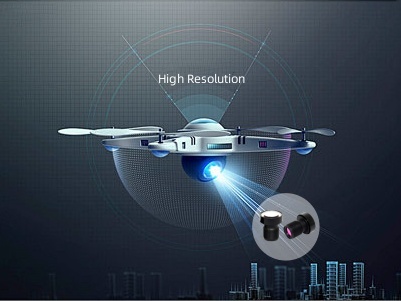Video Conferencing Lenses| Maintain High Image Quality in Low Light Environments
Jun 21, 2024
Video conferencing camera is a complex device that consists of multiple key components to ensure a high quality video transmission is provided. Lenses play a crucial role in video conferencing cameras, facing many challenges in the video conferencing lens market, including maintaining high image quality in low light environments, compatibility with existing systems, cost-effectiveness, internet bandwidth limitations, privacy and security, rapid adaptation to different conference room environments, remote control and integration, maintenance and upgrades, and ensuring full coverage of images in multi-user scenarios. Wintop Optics addresses these challenges with the introduction of two new video conferencing lenses: the YT-3559P , YT-3560 and the YT-3556P
1. High-resolution Imaging Lens: Both lenses offer 5mp、8mp high-resolution imaging, ensuring clear detail is captured even in remote meetings.
2. Low-distortion Optical Design Lens : The specially designed low-distortion lens provides a wide field of view while reducing image edge distortion, making it suitable for multi-person conference scenes.
3. Advanced Autofocus Technology Lens: A fast and accurate autofocus system ensures that every participant in the meeting can quickly and clearly appear in the picture.
4. Optimized Low-light Performance Lens: Equipped with a large aperture and high-sensitivity sensor, combined with HDR technology, the video camera lens can provide high-quality images under various lighting conditions.
5.Wide Dynamic Range (HDR) Lens: The YT-3559P and YT-3556P conference camera lens are capable of maintaining detail in high-contrast scenes, avoiding overexposure or underexposure.
6. Network connection and remote control: Supports remote control over the network for easy integration into modern smart conference room systems.
7. Physical privacy shutter: Equipping the lens with a physical shutter enhances privacy protection and meets modern data protection standards.
8. Compatibility and integration: The design takes into account compatibility with mainstream video conferencing platforms, simplifying the installation and integration process.
9. Durability and reliability: Both lenses are built with a rugged construction, making them suitable for environments with frequent use, reducing maintenance costs.
10. Cost-effective: While maintaining high performance, Wintop Optics offers competitive pricing to meet the needs of businesses of all sizes.
The YT-3559P and YT-3556P smart home webcam lens series, with their high resolution lens, low distortion lens, and excellent low-light performance, meet the stringent lens requirements of modern video conferencing. By addressing key challenges in the market, Wintop Optics provides enterprises with advanced video conferencing solutions designed to enhance the quality and efficiency of remote communication.

